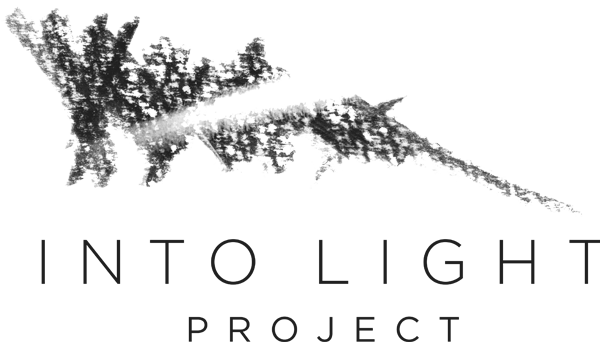Any group who tours the INTO LIGHT exhibition can use the INTO LIGHT Facilitators Guide to help maximize the educational objectives. The guide is available on the INTO LIGHT website and helps to provoke thoughtful conversation about the issues around drug addiction.
Various majors in universities and colleges can use the exhibit to inform their course of study in such fields as criminal justice, social work, health professions, counseling, sociology, psychology, political science, art, journalism, law enforcement, theatre arts, theology and more.
• Meeting in the gallery, students examine and discuss addiction as a social issue and its relevance to their area of study.
• With advanced planning, instructors can develop a curriculum around the topic of drug addiction, stigma, policy, etc. A detailed facilitator’s guide is also available to guide discussion.
• Cross departmental discussions on complexities of substance use disorder (SUD), and related social issues, such as safe consumption sites, medication-assisted treatment, decriminalization of drugs, supportive services, spiritual support, etc., provide various perspectives on the topic.
Panels comprised of experts in various fields that intersect with SUD is another way the exhibit can be used. Panelists can also include family members and people in recovery. Topics include stigma, the drug epidemic, personal experiences, health care options, the dangers of fentanyl, the importance of anti-stigma language, educating ourselves and sharing knowledge with others.
• The Drug Enforcement Agency (DEA) has speakers available to talk with groups from children through adults. Wherever DEA offices are located in the U.S., representatives are available to give up-to-date information on the prevalence and use of drugs, and provide opportunities to share information, build connections and foster collaboration, in order to prevent others from experiencing the tragic loss of a loved one.
• Speakers from other agencies can be resourced and families of those in the exhibition are often willing to share their insights.
Using the INTO LIGHT exhibition as a catalyst, students in art therapy majors may provide a space where individuals can express their feelings and experiences about drug addiction through art. This is especially powerful during the opening exhibition of INTO LIGHT Project or when groups are scheduled to come to the exhibition.
Professionals or students can create a play or performance around this pressing social issue to increase awareness and education on SUD. Theatre Arts students have combined their efforts with AV Departments to read narratives while the accompanying portraits of those in the exhibition, produced by AV departments are shown on social media.
Museum curators/directors and others can give tours of the exhibition to any group using the INTO LIGHT facilitation guide with facilitator prompts for discussion.
Any first responder group (EMT, law enforcement, paramedics, health care providers) can benefit from the messaging of the INTO LIGHT Project exhibit. Providing the opportunity to interactive with the portraits and stories of ILP, first responders, who often suffer from emotional exhaustion or a gradual lessening of compassion for those with SUD, reconnect to the humanity of people who have SUD. This provides an opportunity for open discussion on the physical, emotional and psychological impact of helping others and the need for self-care.
Training on the use of naloxone, and distribution of fentanyl test strips is a good way to not only save lives, but to educate people on the effects of drug use and the possibility of drug poisoning. As a result of the ILP exhibitions, fentanyl test strips were approved for the first time as part of campus health initiatives.
• The “Ask Me About” Campaign is a way of extending the message of the INTO LIGHT exhibit outside the walls of the gallery.
• Buttons of each person in the exhibition with a picture of their portrait and a link to the narratives for that state, are available at no cost in the gallery.
• After visiting the INTO LIGHT exhibition, participants take an Ask Me About Button of anyone of their choosing and wear the button on their shirt, backpack or elsewhere.
• When people ask about the person on the button, it provides an opportunity to talk about substance use disorder and the individual on the button
• This is a way to humanize addiction, debunk stereotypes of those who use drugs, to educate others about the use of stigmatizing language and have a conversation.
There are many ways to interact and learn from the INTO LIGHT Project, Drug Addiction: Real People, Real Stories exhibition. You are invited to create your own educational initiatives around the exhibition, keeping in mind the goals of the exhibition and our desire to humanize and respect those who suffer from the disease of addiction.
Donations support the work of The INTO LIGHT Project to produce our exhibit, Drug Addiction: Real People, Real Stories. We bring awareness to substance use disorder (SUD) as a brain disease, help to change the conversation about drug addiction, and work to erase the stigma and shame associated with it.
Support